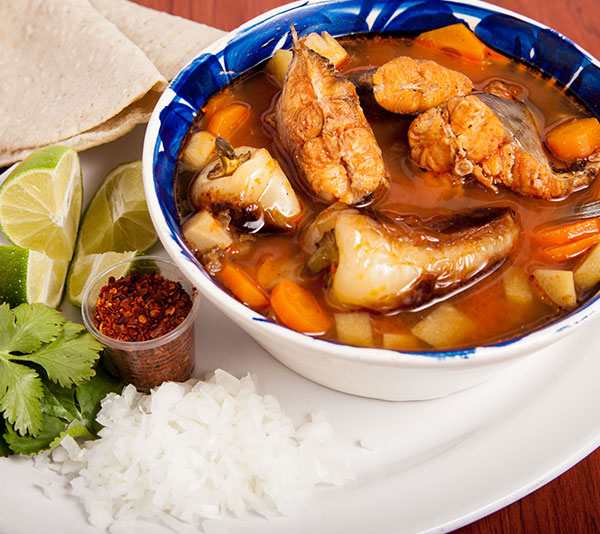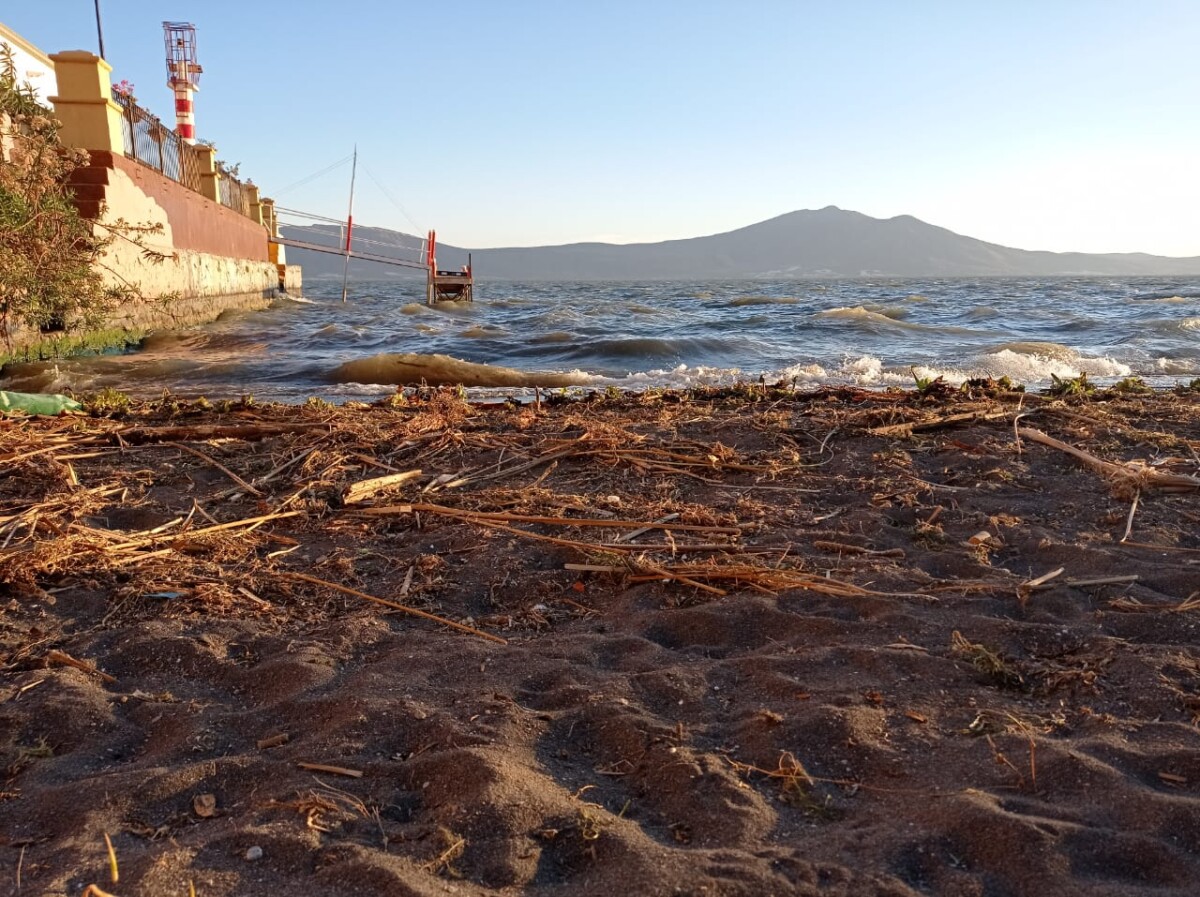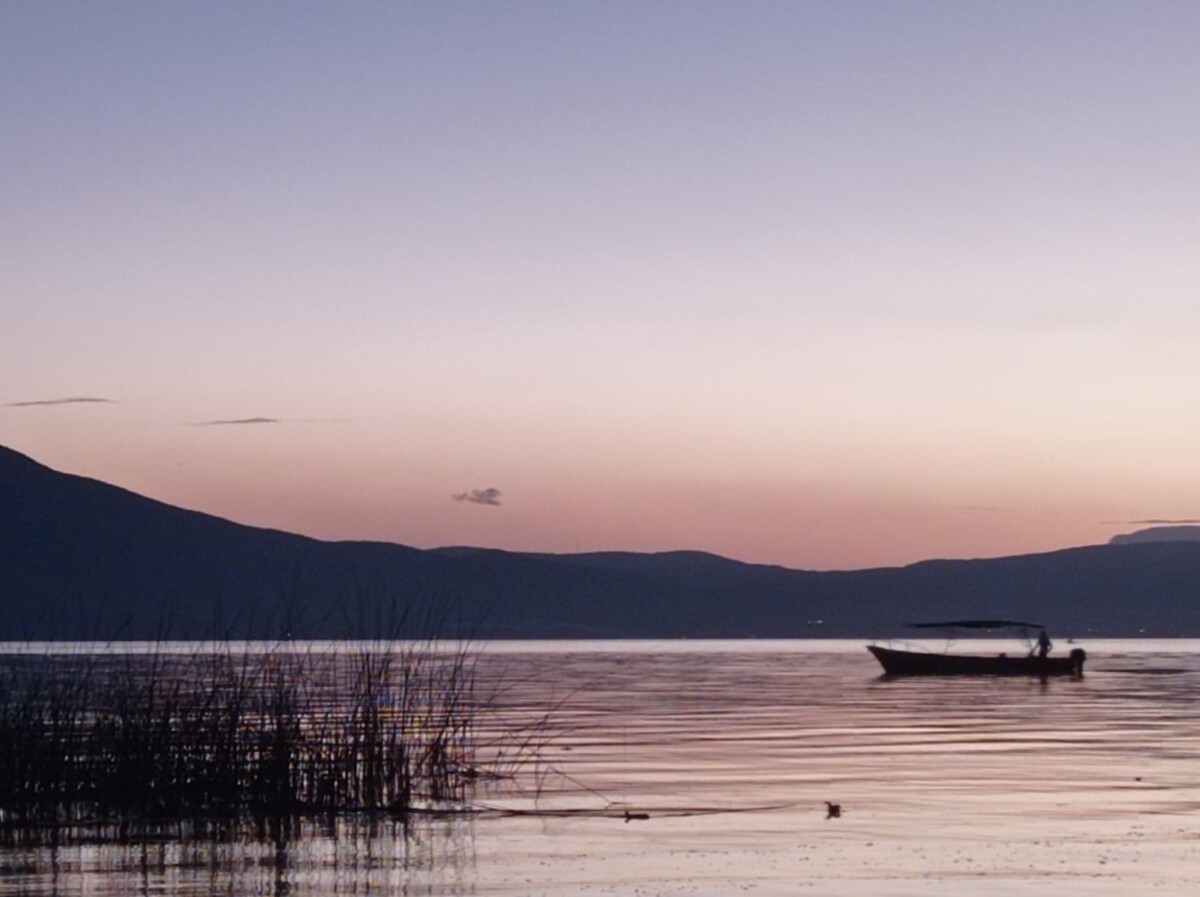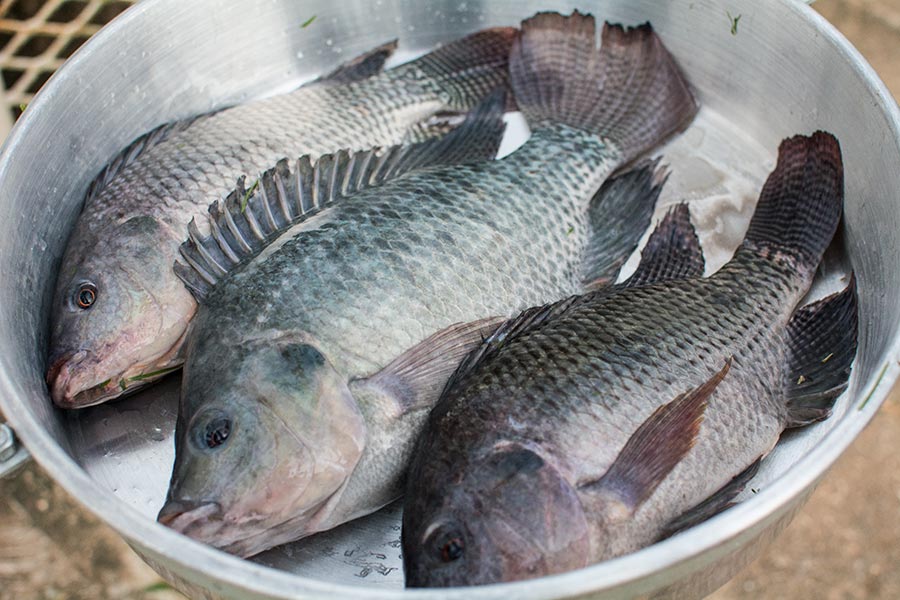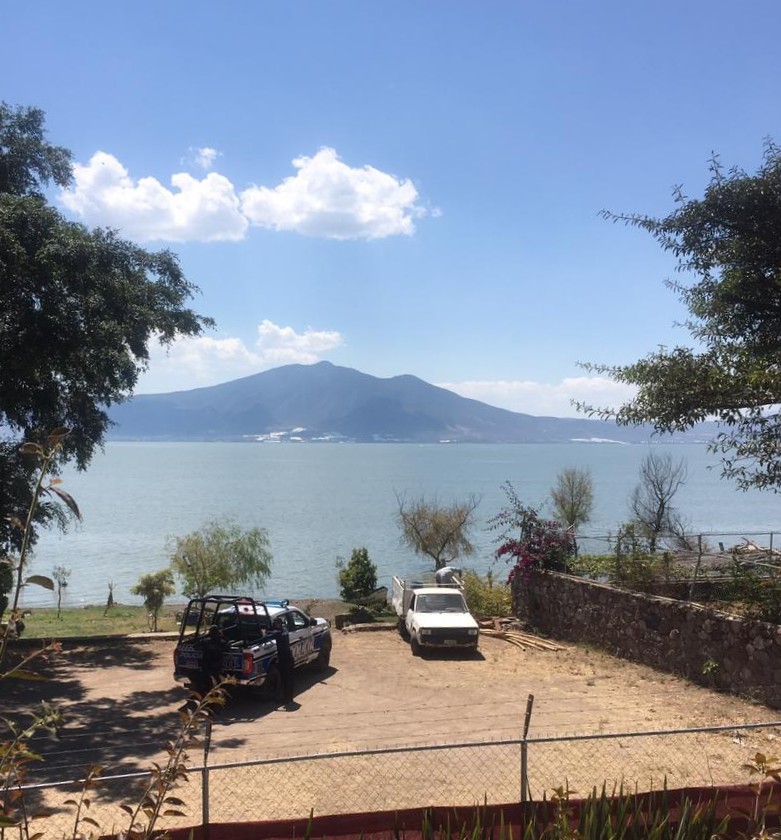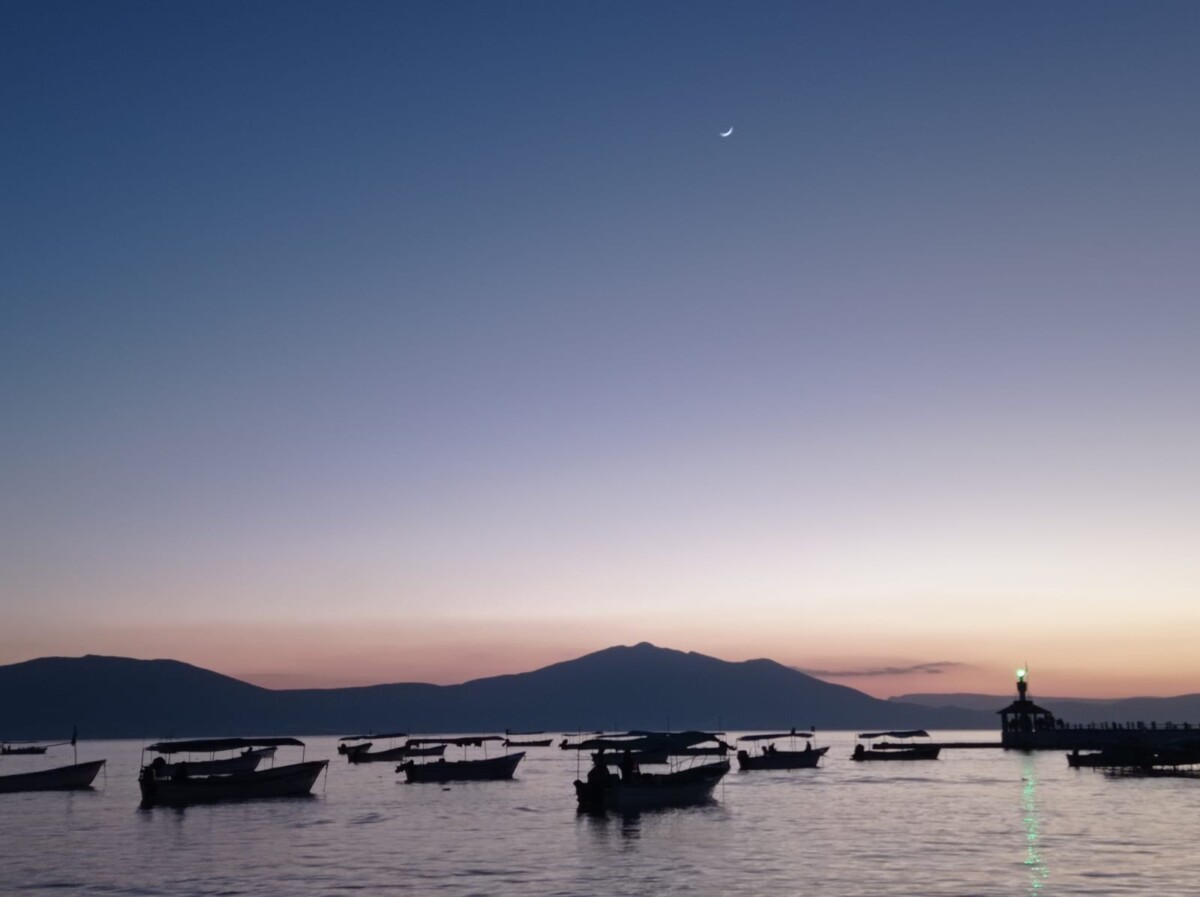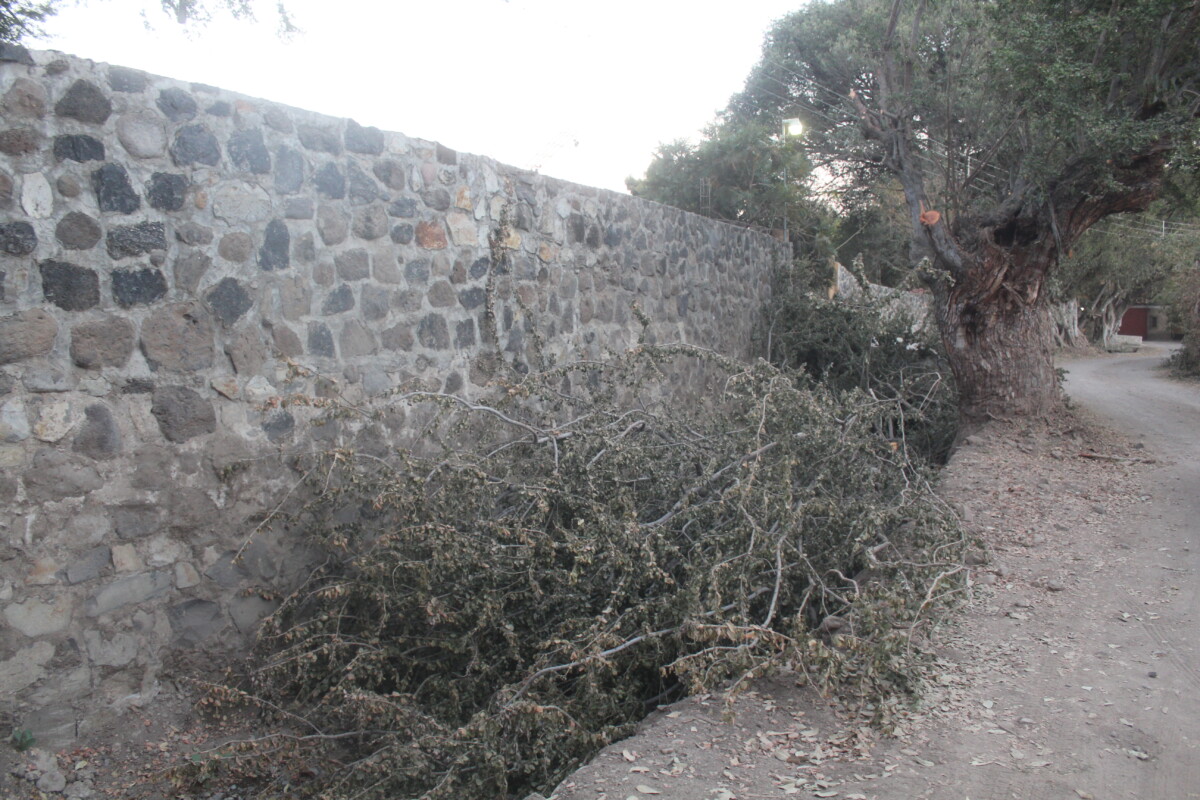lago
Two minors trapped in nets in lake rescued
The incident remained just a scare.
A tragedy was avoided by Civil Protection and Firefighters after the report of two minors who had entered Lake Chapala in the area of Ajijic, during the afternoon of March 22. The minors were trapped in nets used by fishermen and could not get out of the Lake. Emergency personnel were able to free them, but emergency services were called and arrived with ambulances and firefighters.
Caldo Michi: The dish of Lake Chapala’s fishermen
Caldo Michi often has potato and carrot
Sofia Medeles (Ajijic).– “Caldo Michi” or Michi Soup is a very traditional dish for many of the towns around Lake Chapala, and Ajijic is no exception. The former Director of the Historical Archive of Chapala and researcher, Eduardo Ramos Cordero, shares his memories of this traditional dish. According to his grandfather’s memories, the broth was prepared by fishermen after their day’s work. Back in the 1950s and even before, Ramos Cordero recalled that he observed this custom, not only during Lent, but on a daily basis, «Before, the shores of the lake were full of crops: peanuts, watermelons, melons, chili peppers, cucumbers, papaya, jicama, even marijuana and poppy. Some of the owners of these orchards did not pay with money, but in trade. The fishermen would agree that one or two would go to the shore of the lake to start preparing the soup, so that by 2-3 pm, everyone would be eating.»
What varied in the broth was mainly the type of fish used. The fishermen used everything from catfish, tilapia, carp, white fish, charales (chirostoma), to acociles (a tiny crayfish), red crab, small crabs, eels or lamprey fish and turtles. The original preparation includes a bit of lard, tomatillos, onion, plums or green mango (depending on the season), and chiles güeros or banana peppers. The veggies are sautéed, and then the water, fish, salt are added. It’s garnished with a few sprigs of flowered cilantro.
«I had nutrients from many fish,” said Eduardo Ramos Cordero. Known also as Lalo. “When the broth was made, everyone ate: the fishermen, their wives (who brought tortillas), and sometimes their children. Although it was originally made by fishermen, lots of others made it, especially during Lent,» Lalo finished.
Some sources say that this dish originated in the town of Atotonilco, Jalisco, however, for the most part, researchers have found a broth being prepared in a similar way throughout the Lake Chapala area. Its name comes from the Nahuatl word, Michi, which means fish, although others claim it’s because it comes from Michoacán.
Caldo Michi Recipe
Ingredients:
2T lard
4 tomatillos, cut in large wedges
1 onion cut into quarters
6 banana peppers, without tip
A sprig of flowered cilantro
4 medium catfish
Water
Salt, to taste
Optional: Depending on the season, ¼ of green plums, or 4 green mangoes peeled and split and pitted.
Directions
- Heat the lard in a large pot over medium, once it is melted and hot, sauté the tomatillos, onion, and chiles güeros.
- Add the water and let it boil.
- Add fish to taste, either whole or in pieces, salt to taste. Add water to cover the fish.
- As soon as the fish is cooked, remove from heat, garnish with cilantro.
Translated by Amy Esperanto
Blooming trees bring nature’s color to the Magic Town of Ajijic
In Castillo de La Floresta, jacarandas abound. Photo: Sofía Medeles.
Sofía Medeles (Ajijic).- Ajijic has earned the designation of Magic Town, not only for its traditions, but also for the beauty of its streets and the diversity of nature. Proof of this are its spring landscapes with the large number of colorful flowering trees.

Purple rose or guayacan tree on Rio Yaqui street, at the intersection with Rio Bravo. Photo: Sofía Medeles.
La Floresta, in the east of the delegation, is one of the areas bursting with flowering trees.. It is enough to walk a few steps inside the subdivision to find several jacarandas – Jacaranda mimosifolia – that turn the planters purple. The so-called «Castle of La Floresta» has one of the highest concentration of these trees in Ajiic.
In the streets of the central part of Ajijic, what is most abundant are the spring trees – Tabebuia donnel-smithii – in yellow color, standing out among the older houses. «They must be at least 50 years old, even older,» commented some of the older adults interviewed.

The yellow of spring tinges the cobblestones of Independencia Street. Photo: Sofia Medeles.
In some streets, pink also stands out due to the purple rose tree -guayacán or Tabebuia rosea-, as well as the bougainvillea. Although the bougainvillea bloom most of the year, they are most intense in spring.
Likewise, on Ajijic’s boardwalk, on the west side, there are several trees in shades ranging from yellow to pink and purple, which are the most admired by visitors.

Leafy jacaranda trees on Hidalgo Street, in the area known as Las Seis Esquinas. Photo: Sofia Medeles.
Walking through Ajijic Magic Town during the spring, one is immersed in a colorful atmosphere that comes from its facades as well as from trees and flowers that decorate its narrow cobblestone streets.

Pink bougainvilleas north of Ajijic, on Calle Galeana. Photo: Sofia Medeles.

Trees with different colored flowers can be seen on the Ajijic boardwalk, in the area of the International Garden. Photo: Sofía Medeles.
Translated by Elisabeth Shields
Lago de Chapala y presas de Jalisco en mejor nivel que el año pasado
El lago de Chapala se ubica al 67 por ciento de su capacidad según la CONAGUA. Imagen de la orilla de la playa en Ajijic. Foto: D. Arturo Ortega.
Redacción.- De acuerdo con la Comisión Nacional del Agua (CONAGUA), las presas en Jalisco se encuentran en mejores niveles que el año pasado. La presa Calderón está en un 70 por ciento de su capacidad y el Lago de Chapala al 67.
Cabe recordar que durante el temporal del 2021 el lago ganó 1.90 metros, mientras las presas captaron más del 80 por ciento de su volumen total, sin embargo; el 18 de diciembre inició el deceso de los niveles de los cuerpos de agua del estado.
No obstante, el panorama no es del todo positivo pues investigadores del Instituto Tecnológico de Estudios Superiores de Occidente (ITESO) con base en sus estudios, así como en el Atlas de Vulnerabilidad Hídrica en México ante el Cambio Climático y los Diagnósticos de la CONAGUA y el Monitor de Sequía Nacional; estiman una sequía aguda para los próximos meses.
Dichos estudios determinaron que, al tres de marzo, el territorio considerado anormalmente seco en 2021, pasó del 24 por ciento, al 46.6 por ciento en el año en curso y al menos 91 municipios de Jalisco iniciaron la temporada de estiaje con una sequía moderada.
Sin embargo, la recuperación de los vasos lacustres ha mejorado con relación al año pasado. Ejemplo de ello es que la presa Calderón que actualmente se encuentra a un 70 por ciento de su capacidad, comparada al año pasado cuando se encontraba al 16. En el norte del estado la presa Vaqueros pasó del 26 al 77 por ciento de su capacidad.
Este hecho ha llevado al gobernador de Jalisco, Enrique Alfaro Ramírez, a compartir un mensaje positivo en redes sociales el 22 de marzo en el marco de la conmemoración del Día Mundial del Agua.
“A pesar de las dificultades que hemos atravesado, hoy tenemos nuestras presas y al Lago de Chapala en niveles mucho mejores que el año pasado, pero no podemos aflojar, si queremos agua para el futuro, necesitamos hacer conciencia y su uso racional como forma de vida”.
Photo Caption:
Photo Credit: Arturo Ortega
Despite last year’s good weather, so far in the dry season, Lake Chapala has lost 44 centimeters of water. It is currently at 69% of total capacity. The average reservoir volume in the state of Jalisco is 80%.
Translated by Amy Esperanto
Lakeside chronicles
Singer-songwriter Juan José Ramírez Campos is the creator of the song «Jocotepec, la tierra de Dios.» Photo: María Reynozo.
By: María del Refugio Reynozo Medina
Juan José Ramírez Campos, a native of Jocotepec, is a chess player, teacher, and lawyer, but above all, a singer-songwriter.
His mother tells him that, as a child, when they were on their way to school, Juan José used to sing. “Why don’t you shut up,” he was told one day. – “I can’t,» he answered.
In high school, Juan liked to play the flute. He composed his first song while studying for a bachelor’s degree in Education at the Escuela Normal Superior.
In high school he also entered the world of chess. He would go over and watch a group of students who played chess. He spent about two months watching them; one day one of them was absent and they asked him if he wanted to play. He remembers that he played against the weakest player and lost.
“I’m really bad,» he thought. He took it as a challenge, and with the help of a friend he learned. Since then he has not let go of chess; he has participated in municipal, state and world tournaments. He teaches chess at Tecnológico de Chapala and Colegio Jocotepec. He has two diplomas in chess didactics certified by the Ministry of Public Education, and has won international awards.
As a teacher, he has taught philosophy, sociology, economics and history at the Technical University of Guadalajara (UTEG).
Juan José also studied law with an interest in the area of public service. He was secretary general of the Jocotepec City Council from 2015 to 2018. He served as trustee and interim president of this body from 2018-2021.
However, of all his interests, the one that is essential for him is singing and playing the guitar. –“I don’t just play the guitar, I caress it,» he says.
He has 160 songs registered with the National Copyright Institute (INDAUTOR) over a twenty-year career. «Jocotepec, la Tierra de Dios» is his most recent work, written in 2020. For “Juanjo,” nickname for Juan José, the municipality is made up of a diversity of colors. In this piece, the images of the towns that make up the municipality emerge. Each delegation of the municipality has something beautiful to show, he says. The sarapes of Jocotepec and articles made in San Cristóbal Zapotitlán with corn are only a few of the diverse crafts of the lakeside municipality.
The first group to perform Juan José’s material was Banda Esmeralda («Por Ti Mujer»). «El Santo Cristo de la Expiración» has been recorded by Dina Buendia. An agreement is pending with a production company in San Luis Potosí to record «Que Nos Espera» and «La Flor del Edén.» In 2019 he recorded his album «Desde el Corazón de Mi Tierra» with eleven songs, nine of which he wrote himself.
The genres he sings most are huapangos, ballads and rancheras. His compositions are inspired by personal experiences or the issues he observes in society. The song «La Pobreza» came from watching a fire-eater and seeing a homeless man looking for food in the garbage.
Sometimes he is also commissioned to write compositions, like one that a friend asked him to write, «Make me a ballad.» The ballad came out between sips of beer.
His biggest dream is for his songs to be heard by more people.
A notebook and a pen are all he needs when inspiration strikes.
His grandparents taught him a taste for the voices of Agustín Lara, Armando Manzanero and Martín Urieta, and from them he also inherited the love for his land.
«Jocotepec is the land of my love,» he concludes.
Translated by Elisabeth Shields
The price of fish from Lake Chapala increased for Lent
Tilapia, one of the most consumed local fish at Lakeside, costs up to 65 pesos each on Fridays during Lent. Photo: Jazmín Stengel.
Jazmín Stengel (Ajijic).- This year, seafood products in general increased between 10 to 15 percent during Lent (March 2 to April 14), and fish from Lake Chapala costs up to 25 pesos more per piece on Fridays.
According to merchants selling seafood products such as basa (a catfish) fillet, tilapia, and shrimp increased very little at the beginning of Lent, so most merchants kept their prices fixed, as did seafood restaurants.
In the Chapala market and downtown fish markets, the price of tilapia and basa vary between 130 and 150 pesos per kilogram. In comparison to last year, the cost averaged an increase of 20 to 30 pesos. Shrimp prices remained the same, ranging between 245 and 250 pesos per kilogram.
Lake Chapala fishermen have increased their prices considerably. Tilapia and catfish from the lake, which in 2021 ranged from 25 and 35 pesos, now range between 40 and 50 pesos.
In addition, with the beginning of the Lenten season, local sellers increased their prices by ten pesos more to take advantage of the demand for the product. As a result, a piece of tilapia or catfish can cost up to 65 pesos on Fridays, while a kilo of tilapia fillet costs around 130 pesos.
Consequently, the prices of dishes prepared with the local product did increase in street markets and small stores; and some of the inhabitants who used to eat fish on Fridays during Lent stopped doing so.
«The tradition is no longer the same, few people respect it,» commented one of the merchants. In addition to selling less fish, the merchant notices every year how customs are changing. «Now they sell meat all week long,» said a citizen who saw taco stands open even on Lenten Fridays.
On the other hand, consumers have become increasingly skeptical and no longer follow the Catholic tradition of not eating meat during Lent, as expressed by Mariana, who only stops eating meat on Fridays and now with the high prices has also stopped consuming local fish.
Consumers are advised to research the safety of fish from Lake Chapala. Fish from Lake Chapala are both farmed and caught wild as well as for sport by local fishermen. Dr. Todd Stong has studied the lake and fish for almost 2 decades and reported that fish from the lake are well below the international limit for safety. (Annual State of the Lake Report 2020, Part 1). A PMC report indicated that PCB’s and other toxins bioaccumulate in Lake Chapala fish (Bioaccumulation of PCBs and PCBs in Fish from a Tropical Lake Chapala, Mexico)
Translated by Kerry Watson
Denuncia ciudadana evita terraplén en las playas de Ajijic
Camioneta dejando escombros en “El Parquecito”, espacio que se encuentra al final de la calle Juan Manuel, al oriente del poblado. Foto: Cortesía.
Sofía Medeles.- Un supuesto terraplén en la playa de Ajijic, en el espacio ubicado al final de la calle Juan Manuel y conocido como “El Parquecito”, fue denunciado por ciudadanos; ese mismo día, las autoridades municipales pararon los trabajos.
Los hechos sucedieron el sábado 5 marzo, alrededor del mediodía. La persona que reportó -quien optó por mantenerse en el anonimato-, comentó que vio cómo bajó una camioneta de carga para vaciar tierra y escombro.
La denuncia se hizo al encargado de despacho de Ajijic, Maximiliano Macías Arceo y, rápidamente, se enviaron patrullas e inspectores a la zona.
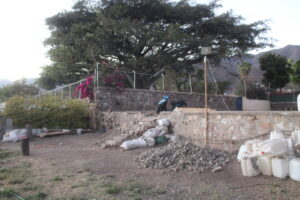
Hasta el pasado miércoles 9 de marzo, aún se encontraba el escombro y material en la zona. Foto: Sofía Medeles.
Lo que en un inicio se reportó como terraplén, resultó ser una rampa que se trató de hacer desde el nivel del parquecito, de aproximadamente 1.3 metros de altura, para bajar a la playa del Lago de Chapala.
“Lo que pasó, es que hay gente que vive ahí, en terreno federal, el llamado ‘Escuadrón de la Muerte’. La gente suele llevar cosas, y esta vez les llevaron escombro porque planeaban hacer una bajada del parquecito, hacia la playa. No son dueños de esa zona, y no pueden decidir qué hacer con ella”, dijo la persona denunciante.
Por su parte, Macías Arceo, comentó que el presidente municipal, Alejandro de Jesús Aguirre Curiel, le encomendó estar al pendiente de este tipo de invasiones, por lo que, al recibir la notificación, envió inspectores de Desarrollo Urbano y oficiales de policía, para verificar lo sucedido.
Finalmente, quien reportó la acción confirmó lo dicho por el encargado de despacho, además de que se les dio una advertencia a las personas que viven ahí de que no tienen permitido realizar modificaciones en la zona federal y que, de volver a hacerse, tendrán sanciones. Asimismo, se volverá a colocar una cadena para evitar la entrada de automóviles a esa área.
Lake Chapala down 36 centimeters
Mexico’s largest lake has lost 36 centimeters (about 14 inches) so far during the dry season. Photo: Archive.
So far in the dry season, Lake Chapala has lost 36 centimeters, and is down to 95.75 centimeters, 71 percent of its capacity, according to the National Water Commission (CONAGUA).
Residents of La Cristina denounce neglect by authorities
After a pruning, CFE personnel left the branches in the creek of Las Garzas street in La Cristina Photo: Sofía Medeles
Sofía Medeles(Ajijic).– Residents of La Cristina, a neighborhood located to the west of Ajijic, denounced the lack of cleanup work after the mudslides of October 2021.
The complaints are mainly related to the silting of the creek on Las Garzas Street, in addition to the pruning work carried out 15 days ago by Federal Electricity Commission (CFE) personnel, which left the branches in the creek.
Other problems mentioned by affected residents were the spillage of sewage into the stream, and the encroachment on private property of debris from the landslide left by state cleanup crews after clearing.
«They have not cleaned the street well, nor the creek. With the sewage spill and the garbage dump left by the CFE workers, it is obvious that they do not pay attention to this side of town,» commented one of the inhabitants of La Cristina.
The person in charge of the office, Maximiliano Macias Arceo, acknowledged responsibility and said that they had been made aware of the problems from complaints that they have received.
«We are aware of the encroachment of debris on private property, as well as in the creek. In the next few days, we will carry out the necessary survey to file an official report so that crews and equipment will be sent to clean La Cristina, as well as the many streams that need to be cleared in the western zone of the township. We are going to work fast, to ensure that the creeks are cleared before the rainy season arrives to prevent further tragedy,» shared Macías Arceo.
Finally, regarding the sewage spill, Macías Arceo gave assurances that both he and the Department of Ecology are already attending to the problem. He also provided the telephone number that the public can use to report complaints of this type: 376-765-8025.
Translated by Rebecca Zittle
© 2016. Todos los derechos reservados. Semanario de la Ribera de Chapala

